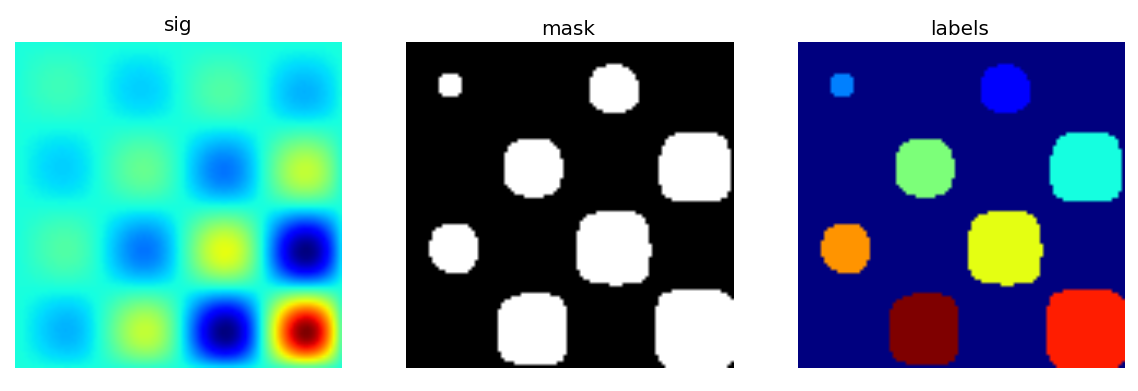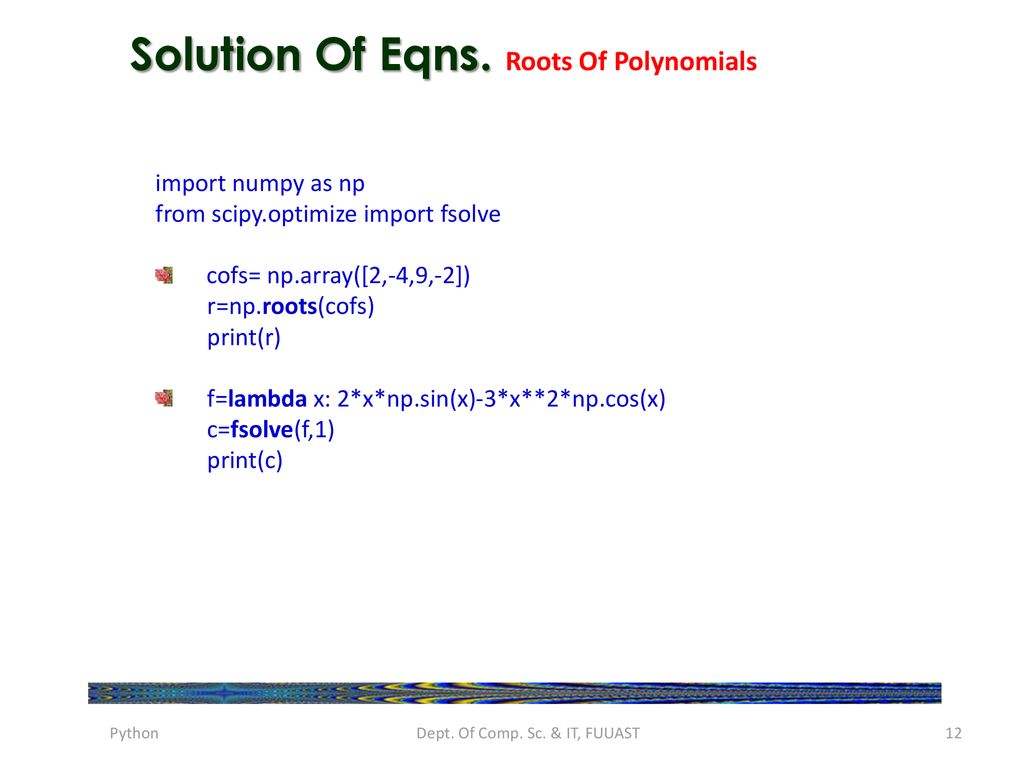

Without knowing the function its difficult to say if this will really fix your problem (you might, for example end up just getting x0, or it may not even converge anymore). # Create symbolic variables "x_0" and "x_1". fsolve doesnt take a constraints argument as far as I can tell, but you could for example replace occurrences of x with abs (x) in your function definition. Since you said you have a large number of variables and equations, here is a slightly more "scale-friendly" approach (but somewhat kludgy): import scipy.optimize Here is a more compact version using lambda functions and the trick described link: here import scipy.optimize Here is a working example (with two equations and minimal modifications): import scipy.optimize ) of length 2, the "shape mismatch" error is thrown. Because ff accepts two variables but does not return a list (or tuple, or array. The original scenario involves two variables and only one equation. Perhaps this is an issue with Sage properly dealing with Numpy/Scipy data types? It seems like the naive approach but I'm receiving the error TypeError: no canonical coercion from to Symbolic Ring. It looks like a Python function is sufficient.Īs a toy example, I've tried the following: sage: from scipy.optimize import fsolve The documentation for Scipy's fsolve can be found here. However, the functions that I'm generating are Sage symbolic functions, which have been mightly convenient to work with, and I'm having trouble getting them into a format that fsolve will understand.

(Where "indefinitely" means "more than 30 mins".) I only require numerical solutions so I was hoping to use Scipy's fsolve function instead. When run assertion error assert all(lengths > minimum_interval_length).I need to find the roots of a system of multivariate non-linear (algebraic) functions and Sage's solve function is running indefinitely.
#Scipy fsolve code
specific code i'm trying work follows: import quadpy import numpy np scipy.optimize import * scipy.special import gammaln, kv, gammaincinv, gamma scipy.integrate import quad, simps l = 226.02453163 mu = 0.00212571582056 nu = 4.86569872444 flag = 2.5e-09 estimate = 3 * mu def pdf(l, mu, nu, t): return np.exp(np.log(2) + (l + nu - 1 + 1) / 2 * np.log(l * nu / mu) + (l + nu - 1 - 1) / 2 * np.log(t) + np.log( kv(nu - l, 2 * np.sqrt(l * nu / mu * t))) - gammaln(l) - gammaln(nu)) def tail_cdf(l, mu, nu, tau): i, error = quadpy.line_segment.adaptive_integrate( lambda t: pdf(l, mu, nu, t),, 1.0e-10 ) return result = fsolve(lambda tau: flag - tail_cdf(l, mu, nu, tau), estimate) where myfun is a MATLAB function such as fun can also be an inline object. This has since been solved using method other described below, i'd quadpy work, see if results improve all. Input Arguments The nonlinear system of equations to solve. there no closed form integral of pdf, forced integrate numerically, feel might introducing inaccuracy? In application fsolve finds root 50% of time. note flag extremely small number, on order of 1e-9. note x0 (float) estimate of root defined elsewhere in script.

#Scipy fsolve pdf
Which takes probability density function, finds result tau such integral of pdf tau infinity equal flag.

I'm trying solve integral equation using following code (irrelevant parts removed): def _pdf(self, a, b, c, t): pdf = some_pdf(a,b,c,t) return pdf def _result(self, a, b, c, flag): return fsolve(lambda t: flag - 1 + quad(lambda tau: self._pdf(a, b, c, tau), 0, t), x0)


 0 kommentar(er)
0 kommentar(er)
